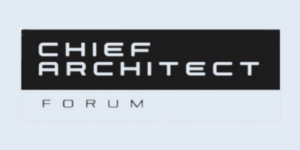Modern Enterprise Architectures Event
THE AGENDA


9am – 10am: Modern EA: Lessons from the front lines
GEORGE PARAS
owner of EAdirections and Editor-in-Chief for Architecture and Governance Magazine, consultant in Enterprise Architecture and IT Strategy
TIM WESTBROCK
owner of EAdirections and Editor-in-Chief for Architecture and Governance Magazine, consultant in Enterprise Architecture and IT Strategy
Why is it that some EA practitioners can be successful, while others who work on similar deliverables fail? Enterprise Architecture has an uneven past, a spotty present, and an unclear future. On the front lines, we see a mixed bag – notable successes for some, failures to gain traction for others. Lesson One: each company and its culture and needs dictate the approach. Lesson Two: The fundamental ideas behind EA continue to be sound, most notably adaptive EA concepts. While working on modern in-demand topics, it is equally critical to think about enhancing the practice of EA. Pay attention to “how” EA must work to improve success. In this session, we’ll explore what has changed over the history of EA, what has not changed, and what lessons everyone should learn to improve EA’s acceptance.

10am – 11am: GRC and Cybersecurity: Best Practices
JERRY SANCHEZ
Founder and Managing Partner of Framework Security
Governance, Risk and Compliance (GRC) solutions have been developed to improve the overall information security program for large organizations. Often these tools are not flexible enough for small and medium sized organizations. In addition, they are often detail only one point in time and don’t allow teams to visualize the current state. We’ll discuss the benefits of leveraging off the shelf project portfolio management tools to actively mature security programs and view progress in real-time.

11am – Noon: Leveraging Business Architecture to Build a Resilient and Sustainable Organization
WHYNDE KUEHN
Founder and Managing Director of S2E Transformation Inc.
What does it really take for an organization to be truly adaptable, able to operate indefinitely, and leverage disruptions as opportunities for innovation and renewal? And what do words like resiliency and sustainability really mean within a business context? This talk will explore key concepts and principles of resilient and sustainable organizations and business ecosystems, using the natural world as our guide. It will then explore how business and enterprise architecture can be leveraged to build resilient and sustainable organizations, focusing on their role in assessment, design and transformation to future state.

Noon – 12:45pm: State of Enterprise Architecture
STEVE ELSE
CEO, Chief Architect, and Principal Trainer of EA Principals
I propose to present a State of Enterprise Architecture (EA) from the Perspective of the Covid-19 Pandemic. I will include lessons learned about the existing maturity of EA itself including the lack of understanding of its potentially outstanding role for providing better-informed decisions faster across the dynamic Architecture Landscape. Not only will I highlight its need to be able to contribute to Crisis Management, but also to Healthcare, Supply Chain and Logistics, Financial Services (including Banking and Insurance), but also to Manufacturing. I will illustrate how the low understanding among government and industry captains has led to a default to have non-architectural experts working in non-collaborative ways and failing to consider the interconnectedness at different levels of government, including globally, for enhanced collaboration, requirements gathering and agile adjustments to them, gap analysis in terms of both Capability-Based Planning and Performance Management, and the inability to bridge between healthcare mandates and economic planning in an incremental way tied to transition architectures. I will illustrate how there has been a failure for EA to be perceived as an essential value-added team player to help with integrated project planning, collaboration and innovation across different time dimensions. On a positive note, I will make recommendations for how EA can mature rapidly to step up and be a critical strategic planning, governance, and project planning partner going forward, including be explaining it in as simple a way as possible and including it in all engineering, ICT, and MBA programs, at least at the graduate levels, as well as for CxO orientations and PMO and IT Staff workshops.

12:45pm – 2pm: Modern EA for Innovation and Resilience
PAUL PREISS
CEO and Founder of Iasa Global
Driving change and growth by delivering digital systems (including the people and process) is the modern architects primary purpose. In this talk we will explore systemic innovation and resilience by marrying the often conflicting notions of well-designed and quick to market innovation which ties into a full enterprise level portfolio of value streams. We will see that through the right application of competency both organizational and individual as well as appropriate engagement models the modern enterprise architecture team actually benefits from the different capabilities of its members including business, software, infrastructure and information architects. We will review capability and service based role management and how those overlapping agendas, which Iasa based on techniques in role management in modern healthcare, can actually help form the healthy tension from which digital advantage emerges.

2pm – 3pm: Why your Integration Strategy will Fail to Achieve Real Digital Advantage
BRICE OMINSKI
An acknowledged integration architecture thought leader and CITA-P architecture professional
Digital transformation means a lot of different things to different organizations. One of the biggest obstacles to creating a real digital advantage is focusing your IT architecture integration strategy into the wrong areas. We will explore some of the common traps and digital integration anti-patterns. If you miss one of these, you could outright fail to get a real digital advantage. These patterns from business, governance, and technology are some of the most common mistakes I have seen. We will discuss several of the IASA prescriptions to avoid failure and how to do that right away. After this call, you will have a better understanding of how to use your integration strategy to achieve a measurable digital advantage.

3pm – 4pm: Complexity in Health IT
BRIAN LOOMIS
Brian will lead a discussion on what we have learned about healthcare IT (HIT) through the ongoing COVID-19 pandemic, focusing specifically on the changes in business model which have resulted, and changes to systems thinking that leads us to adaptable systems for future challenges. The distributed nature of typical health systems indicates a technology fragility in the face of both operational and inter-organizational stressors. How do we leverage digital transformation as well as antifragile techniques to solve solutions challenges where we do not have an opportunity to plan in advance? Medicine is becoming more patient-centric and the current crisis provides an impetus to think about newly-important design aspects as we look across the chasm. Architects will understand the complex systems design approach in more detail and will be able to extend strategic guidance for continuity planning into their own domains.

4pm – 5pm: Architecting the Future: Enterprise Architects as Practical Futurists
TOM GRAVES
An independent consultant in enterprise architecture, business transformation, systems development and much more
In every country, all of our enterprises are facing unprecedented levels of challenge and change. To help our organizations not just to weather the storm, but thrive in the new environment, enterprise architects would do well to extend their toolkit with tools from other strategic disciplines. This session provides a practical overview of some of the tools available from the futures/strategic-foresight domains, and shows how to use them in enterprise-architecture practice.

5pm – 6pm: From Strategy to Execution – Mastering the Missing Link
MIKE ROSEN
Chief Scientist at Wilton Consulting Group
Understanding and designing business strategy and change is the first step, but statistics suggest that only about 30% of strategies are successfully executed, and most leaders agree that executing on strategy is one of the weakest links of enterprise leadership. There are many reasons for this – change is hard, culture is resistant – but also, strategy is often not articulated well enough or unambiguously enough to drive initiative planning. And even if it is, many businesses don’t know enough about their current state and current capabilities to identify gaps, overlaps, synergies, conflicts or the impact of proposed changes. Business Architecture to the rescue! Business architecture provides a proven method for translating the desired business change into achievable initiatives that are based on data driven analysis and prioritization. Attend this session to learn:
•How business architecture defines key business capabilities and value streams
•How to identify gaps, overlaps, synergies and conflicts for initiative planning
•How to prioritize efforts to maximize the value of business change

6pm – 7pm: Can EA be Based on Business Strategy: 4 Lessons for Architects
ROD DILNUTT
A results focused digital leader with a proven ability to influence complex stakeholder networks and drive transformational change
We commonly accept that Enterprise Architecture is informed by business strategy. This assumption is deeply embedded in our mainstream methodologies, so why do so many architectural projects go wrong at great operational and financial cost? Our research found that contrary to claims on the critical importance of the business strategy for EA, this claim cannot be substantiated which raises questions on the actual significance and value of business strategy as an input for EA initiatives. We found that there are four fundamental preconditions that must be assessed before commencing any architectural development:
1.Is there a well-articulated and agreed Business Strategy?
2.Does this Business Strategy provide clear direction?
3.Is the Business Strategy robust and have the flexibility to respond to rapid change?
4.Will the business strategy create legacy ICT?

7pm – 8pm: Complex Systems: Architecting an AI Data Platform for the Pharma Industry
RAJ RAMESH
Chief AI Officer at DataFoundry
As a drug moves through its life cycle from the research lab to commercialization and distribution, it picks up a lot of data along the way. Some of this data is structured, but close to 80% may be unstructured. Also, data collected outside the clinical trial ecosystem – such as from claims, wearables, and social media – is growing very fast. Such data is proving critical for managing the drug lifecycle effectively. Traditionally, we have to manually extract data to convert it to digital form first, before we can leverage the data for anything from analytics and reporting to signals and safety. However, AI and machine learning algorithms offer us new options to automate the digitalization of various forms of data and to perform predictive analytics and clustering on it. We are architecting an enterprise-class, scaleable, microservices based, serverless, cloud platform. This platform can ingest, process, transform, and report out valuable data-driven insights. As we implement the system, we have to make significant architectural decisions upfront, due to the complexity of the ecosystem in which the platform will operate. However, this is not only a technical challenge. There are big business challenges to go with it. In our approach to get the platform working with existing and often legacy technology platforms, we find ourselves addressing many business challenges as well. In this talk, I’ll share both the technology architecture and the business challenges we typically have to overcome. Here are some of the questions I’ll answer:
•How does the business perceive this new technology and what it takes to accept change?
•How to integrate the platform with existing business processes and systems?
•How do we manage structured and unstructured data?
•How do we architect for scalability and continuous adaptability?
The audience will walk away with great ideas on how to leverage AI to extract value from their data, as well as what they should not attempt to do.

8pm – 9pm: Modernizing Your Enterprise Architecture Way of Working (WoW)
SCOTT AMBLER
Vice President, Chief Scientist of Disciplined Agile at Project Management Institute
No matter how smart we are, no matter how brilliant our strategy is, no matter how modern our models are they are all for naught if we’re unable to engage effectively with the rest of our organization. The session explores how to apply the Disciplined Agile (DA) toolkit and the Architectural Thinking Framework (ATF) as a foundation for choosing a way of working (WoW) for enterprise architecture within an organization. We must embrace collaborative and evolutionary strategies for architecture at both the team and enterprise levels so that enterprise architects can engage with our stakeholders in a responsive, flexible, and streamlined manner.

9pm – 10pm: Architecting Social Systems
PETER MURCHLAND
CEO of Interface Consultants
This session will outline some of the distinctive elements involved in architecting social (animate) systems as opposed to mechanistic (inanimate) systems, with practical examples, that have proven to be critical to success in architecting enterprises (as opposed to architecting IT systems used by enterprises). We will explore some important terminology, key principles, helpful practices and useful reference models. An “interactive” approach will be taken, within the limits of a virtual event!

10pm – 11pm: What are the failure points of Digital Transformation (DT)?
SUNIL MYSORE KEMPEGOWDA
Principal Enterprise Architect at CloudTechInfo
How Enterprise Architecture can assist in increasing the success of DT. Technology is inevitable for the existence of private or public organizations. Due to the change in the procurement of technology from upfront cost, aka Capital expenditure to pay as you go, aka Operation expenditure acquisition of technology is seamless for an organization. The acceptance of social media in business, reliable, affordable mobile networks (4G), state of the art smartphones are accelerating the digital transformation as inevitable rather than an option. Unfortunately, 85 % of organizations fail in their journey as per leading research organizations. The presentation will cover the typical process followed in digital transformation, its failure points, and how the practice of enterprise architecture approach will increase the success rate. Key takeaway:
•A clear understanding of what is digital transformation
•How to identify critical failure points in the digital transformation journey.
•What is the significance of Enterprise Architecture in digital transformation projects?

11pm – 12am: Architecture as an enabler of business model innovation
TERRY ROACH
Founder of Capsifi and lead architect of the Jalapeno business modelling platform
The recent era of Digital Transformation has fueled the most significant wave of technology investment of past decade. As the hype cycle has evolved and is finally bottoming out, there has been a noticeable shift in thinking about transformation. The initial frenzy to treat it with a dose of technology, has given way to a maturing realization that:
•Digital is not in the technology; it is in the customer. The real imperative is in addressing the increasingly sophisticated digital demands of customers and keeping pace with the constantly evolving digital offerings of competitors. A far more complex and challenging problem than procuring and implementing a technology platform.
•Transformation is not an initiative; it’s a capability. It’s not about transforming but building the capacity to continuously transform. Figuring out how to embrace continuous, ongoing innovation and develop an adaptive business culture is a perplexing but urgent necessity. Digital Transformation is in fact a continuous exercise in business model innovation
– This session will focus on the role of architecture in innovating a business operating model, by identifying innovation opportunities and aligning delivery programs with business and technology strategies.

12am – 1am: Enterprise Cloud Transformation Patterns and Pitfalls
PETER CUMPER
A passionate and engaging leader with an instinct for IT
Technology vendors have been promoting Cloud technology for over a decade, yet mainstream Cloud adoption varies across industries and in the public and private sector. Why is government slow on the uptake relative to the private sector and how has Cloud effected the technology and IT services supply chain? In this presentation Peter will outline his experience before and after Cloud went mainstream and its effect on system integrators, consulting firms, start-ups and the public sector. Peter will share his observations and experience of patterns and anti-patterns for Cloud Enterprise Transformation.

1am – 2:00am The type of problem you are facing steers how much control you can expect
HENRIK EKSTAM
Roadmap leader in INGKA (IKEA retail)
It is a common assumption that all problems are the same, but this is not correct: Building a bridge have very little in common with raising a child. Architects work traditionally with complicated matters but are moving to a high degree into working with complex issues, in short the closer to technology the more complicated, the closer to strategy the more complex. This topic will focus on how to translate business strategy into tactics and how that requires designing for complexity and adaptation rather than efficiency.

2am – 3am: Exploring Enterprise Architecture Benefits and Challenges
SHERAH KURNIA
Associate Professor at the School of Computing and Information Systems, the University of Melbourne, Australia
Modern organizations practice Enterprise Architecture (EA) to gain benefits in operational, managerial, strategic, and infrastructure domains. EA is often considered as a solution to reduce IT implementation failure, improve profitability and enhance business-IT alignment within organizations. However, organizations often find it difficult to articulate the business value of EA and justify their EA investments. Our research explores EA practices in detail to identify benefits and challenges associated with specific EA-related activities. Based on 18 interviews with architects, we identify eight activity areas constituting EA practices. Each activity area implies certain activities supported by some EA artifacts leading to specific benefits but often impeded by some challenges. Our study shows that EA practice includes many diverse activities usually closely associated with specific types of EA artifacts. Moreover, benefits and challenges of EA practices appear to be specific to each EA activity area.

3am – 4am: Leading Micro-Teams in Large Scale Remote Environments
SANDER HOOGENDORN
Freelance consultant, CTO, software architect, programmer and beyond-agile coach
Over the years the way projects and teams operate in software development has changed quite a bit. From projects where teams were sliced vertically per discipline, to multi-disciplinary and cross-functional teams in agile approaches and frameworks. Now, as a consequence of increasing velocity, remote working, DevOps, DevSecOps and continuous delivery, we are on the move again. In Sander’s vision, teams that will be even smaller than in agile, and much more fluent.

4am – 5am Complexity
PHIL WILLIAMS
Principal Consulting architect for Enterprise Blueprints
Technology systems are built to maximize the certainty of outcome. Traditionally, systems would provide us with efficiency of operations to determine an empirical result. As systems mature and evolve in line with technology innovation, we find we can go deeper than efficient & optimized outcomes, and we build in predictability based on traits and behaviors. Probability & statistical analysis on a large scale begins to direct our outcomes, not just process definition. But we live in a world of uncertainty, a world of vast unpredictability, we cannot account for every perceived possibility that chaos and complexity will bring. As we delve deeper into the potential of technology to meet & manage these unforeseen possibilities, the solutions become more complicated and require a different set of skills to develop & operate. As business technology architects, we are responsible for building systems, that above all else will be safe, secure, and perform the operations they are designed for without interruption. Architects are responsible for designing & building systems that will last beyond their ‘recommended’ service life and remain adaptable to change. This discussion will focus on proven methods to identify the complexity of the environment you are working in as an Architect, and the skills needed to navigate that environment to ensure business technology systems are built to the highest standards of resilience.

5am – 6am: The importance of Emotional Intelligence for Enterprise Architects
BARD PAPEGAAIJ
Enterprise Architects everywhere struggle with a lack of influence and impact in the organizations they work for. They often feel isolated, misunderstood, mistrusted or ignored. This is usually not a reflection of their professional skills and the quality of their work but primarily linked to their under-appreciation of the emotional aspects of the work they do. This presentation is an introduction into the basic concepts of Emotional Intelligence and why every architect should develop their emotional competencies as much as they can.


6am – 7am: EA on Speed: rapid leaps with a Milky Way Map and Enterprise Design Sprints
ANNIKA KLUYVER
Partner at IRM Sweden
MILAN GUENTHER
Partner at Enterprise Design Associates
EA teams are challenged to drive innovation and initiate profound changes in the enterprise. Beyond mere innovation theatre or superficial improvements, this requires us to bring in deep knowledge of the enterprise/business architecture. The Enterprise Design Sprint workshop connects customer-centric product and service development to the enterprise transformation required to deliver, using a Milky Way Enterprise Capability Map throughout the process. This format is based on a workshop originally developed by Google Ventures to boost investment performance across their startup portfolio. Working with many public, corporate and scale-up clients, this tool has been made enterprise-ready: this combined map and workshop technique will help EA leaders take the next step to create faster innovation and change.

7am – 8am: Don’t Panic and React. A Data Driven Approach to Making those cuts during Crises
CHRIS LOCKHART
Enterprise Architect, a Principal at Liberty Advisor Group
Panic has set in. Everyone is cutting operational cost right now in the name of business continuity. The global pandemic and resulting economic turmoil is putting previously approved “sure-bets” and “must-dos” for 2020 on the chopping block. Even worse, furloughs and layoffs will impact people, capabilities and institutional knowledge. Enterprise Architects are in a unique position to help make the crucial decisions on what to cut, where to cut and how to cut without crippling capabilities needed once this crisis (or any crisis) abates. We will look at data-driven portfolio analyses and approaches driven by Enterprise Architects that have been proven to arm decision makers with the right context, understanding and insight to focus business dollars on the right things.

8am – 9am: Maturing Application Security in Development Organizations
MAX POLIASHENKO
Chief Architect at Tax and Accounting Division, Wolters Kluwer
Moving to the Cloud has brought not only numerous benefits, but also unwanted risk of having your or your customers’ data and applications becoming a fair target for various cyber attackers. Whereas on-premise, your systems were protected by significant layers of physical and local network security, being open to Internet has significantly increased the risk that you are only one bug away from a breach. In this environment, Application Security is not just a good idea or some nice-to-have activity, but it should become part of Development organization process, practices, activities, toolset and organizational skillset and competency. This presentation will walk you through the steps on how to start and mature Application Security in a Development Organization based on presenter’s experience of running such a program for 6 years at a large International Software company.







